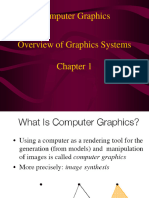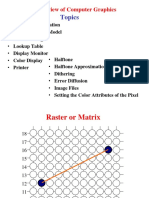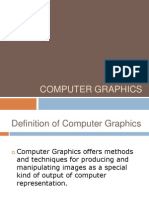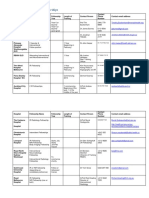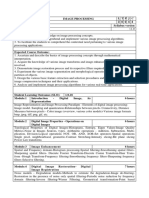0% found this document useful (0 votes)
120 views25 pagesLecture 2 - Image Representation
The document discusses raster image representation. A raster image breaks an image up into a grid of pixels arranged in rows and columns. Each pixel is the smallest element that can be addressed and stores color values. Raster images use a fixed number of pixels to represent an image at a certain resolution, while vector images use mathematical formulas. The document also discusses grayscale and RGB color models for representing color in digital images.
Uploaded by
Lionel AbuCopyright
© © All Rights Reserved
We take content rights seriously. If you suspect this is your content, claim it here.
Available Formats
Download as PDF, TXT or read online on Scribd
0% found this document useful (0 votes)
120 views25 pagesLecture 2 - Image Representation
The document discusses raster image representation. A raster image breaks an image up into a grid of pixels arranged in rows and columns. Each pixel is the smallest element that can be addressed and stores color values. Raster images use a fixed number of pixels to represent an image at a certain resolution, while vector images use mathematical formulas. The document also discusses grayscale and RGB color models for representing color in digital images.
Uploaded by
Lionel AbuCopyright
© © All Rights Reserved
We take content rights seriously. If you suspect this is your content, claim it here.
Available Formats
Download as PDF, TXT or read online on Scribd
/ 25







